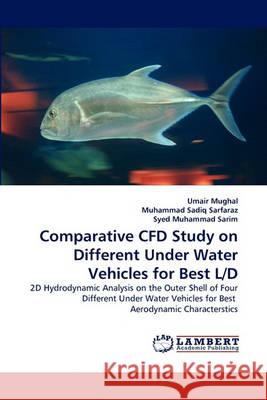Comparative Cfd Study on Different Under Water Vehicles for Best L/D » książka
Comparative Cfd Study on Different Under Water Vehicles for Best L/D
ISBN-13: 9783838361352 / Angielski / Miękka / 2010 / 88 str.
Comparative Cfd Study on Different Under Water Vehicles for Best L/D
ISBN-13: 9783838361352 / Angielski / Miękka / 2010 / 88 str.
(netto: 209,23 VAT: 5%)
Najniższa cena z 30 dni: 219,69 zł
ok. 10-14 dni roboczych
Bez gwarancji dostawy przed świętami
Darmowa dostawa!
Hydrodynamic analysis of under water platforms is gaining a lot of attention, Computational Fluid Dynamics has revolutionized the field of fluid dynamics in terms of number of solutions available for computation of complex fluid flows associated with real world problems. This book aims at comparing the hydrodynamic flow around four different designs. The first design shape is fully elliptical where the other three have different nose, body and tail profiles. Pressure contours were developed at different angle of attack and from these contours lift forces and moments were found. After doing analysis the results on these shells were compared. On the basis of Co-efficient of Lift to Co-efficient of Drag Ratio versus angle of attack and Co-efficient of Moment versus angle of attack, the best profile is proposed. Meshing is done in GAMBIT 3.2 the results are analyzed in FLUENT 6.2. On the basis of these comparisons best shell is proposed.
Hydrodynamic analysis of under water platforms is gaining a lot of attention , Computational Fluid Dynamics has revolutionized the field of fluid dynamics in terms of number of solutions available for computation of complex fluid flows associated with real world problems. This book aims at comparing the hydrodynamic flow around four different designs. The first design shape is fully elliptical where the other three have different nose, body and tail profiles. Pressure contours were developed at different angle of attack and from these contours lift forces and moments were found. After doing analysis the results on these shells were compared. On the basis of Co-efficient of Lift to Co-efficient of Drag Ratio versus angle of attack and Co-efficient of Moment versus angle of attack, the best profile is proposed. Meshing is done in GAMBIT 3.2 the results are analyzed in FLUENT 6.2. On the basis of these comparisons best shell is proposed.











